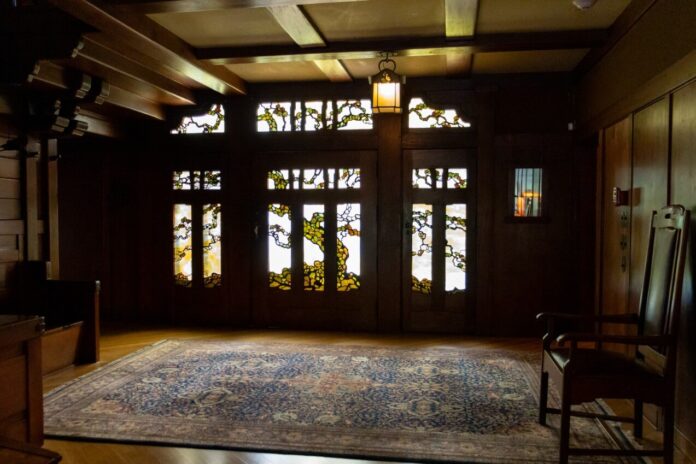
In March of 1908, ground was broken at 4 Westmoreland Place, Pasadena, CA, to begin construction on a house for the Gamble family, of the cleaning goods company Procter & Gamble.
Two years later, the house was completed, and it still stands in the same location today. Its façade is wide and layered. Plants and overgrown moss rise up around the dark, tiled, exterior walls, which are framed by brown wooden planks. The roof hangs low, casting its shade on the windows.
Over a century has passed. The Gambles have since sold the house and moved out. But the building has been preserved in its original 1910 state — now a museum called “Gamble House.” Its main exhibition is the house’s elaborate architecture, designed by a pair of architect brothers, Charles Greene and Henry Greene.
Alexandra Rasic, the Gamble House Conservancy’s executive director, said the Greenes’ meticulous attention to detail set the Gamble House apart from other houses as a work of fine art.
“One of our taglines is ‘Architecture as a Fine Art,’” Rasic said. “And you really feel that when you’re in the house because of how thoughtfully it’s put together and presented.”
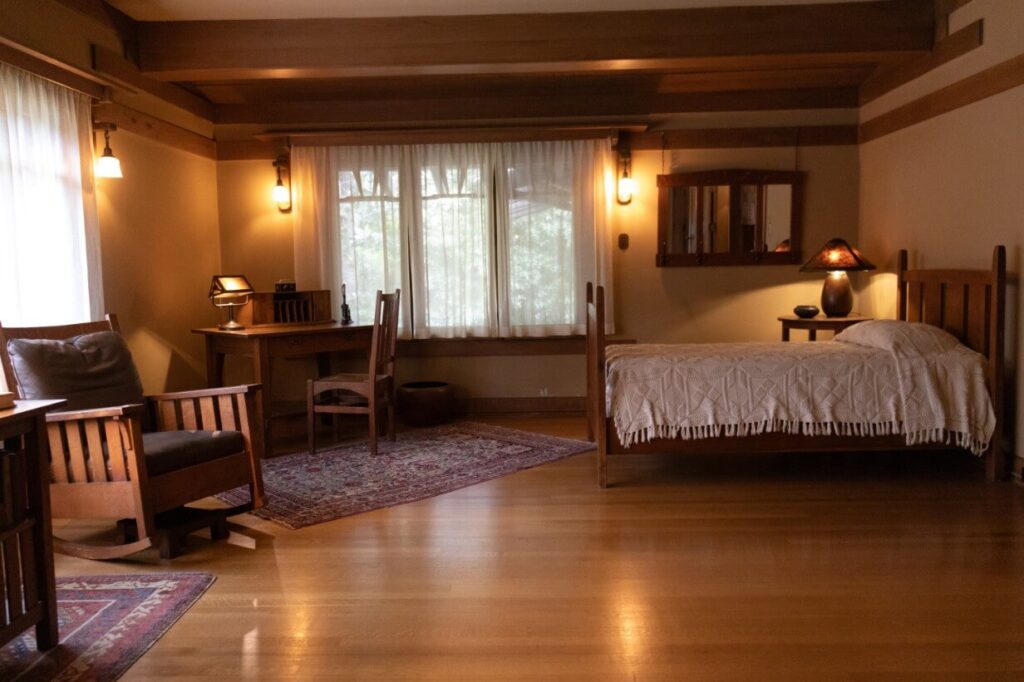
The rooms inside feature many wooden walls and frames. Rasic said the Greenes’ artistic personality is reflected in the choice and placement of these wooden elements.
“You see the artistic display in the frieze that goes around the room that’s carved in redwood,” Rasic said. “[They’re] pieces of wood chosen for how expressive they are.”
According to Rasic, the Greenes carefully designed every angle of the house to impress a feeling of comfort upon viewers.
“[It] all looks so soft and warm and inviting,” Rasic said. “You can see from the edges, the finger-lap joinery, how soft it is. You see that everywhere. These plugs going into the staircase — the softness is throughout the house.”
According to Rasic, even the accessories of the house — from the lamps and furniture to the stained glass and elaborate rugs — were part of the Greenes’ comprehensive artistic vision for the house.
Outside, the house has a front yard, back yard and back terrace with a pond, which Rasic said was carefully designed by the Greenes to feel rustic and natural.
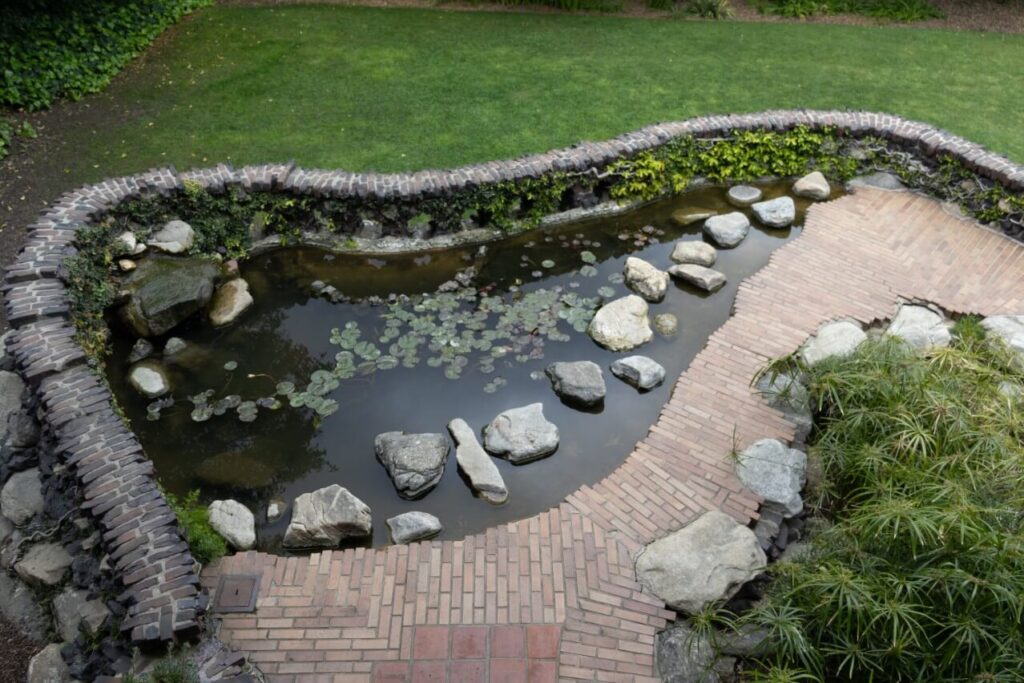
“[It was] made to look like it was 100 years old the day it was finished,” Rasic said. “Great use of these clinker bricks, over-fired bricks intentionally, to add that kind of character.”
Occidental College Art and Art History professor Sami Siegelbaum said via email that the Greenes were inspired by the Arts and Crafts movement, an artistic movement at the turn of the 20th century that reacted to the trends of the Industrial Revolution. According to Siegelbaum, the Arts and Crafts movement emphasized the craftsmanship of art and design over the era’s obsession with technology and industry.
“The [Arts and Crafts] movement wanted to return to an earlier era in which art, design, decoration, architecture were all produced by skilled craftsmen who possessed a deep knowledge of materials and aesthetic form,” Siegelbaum said via email.
According to Rasic, the Gamble House has many features of Craftsman-style architecture, which was inspired by the movement. One of these features, Rasic said, is the house’s wide layout.
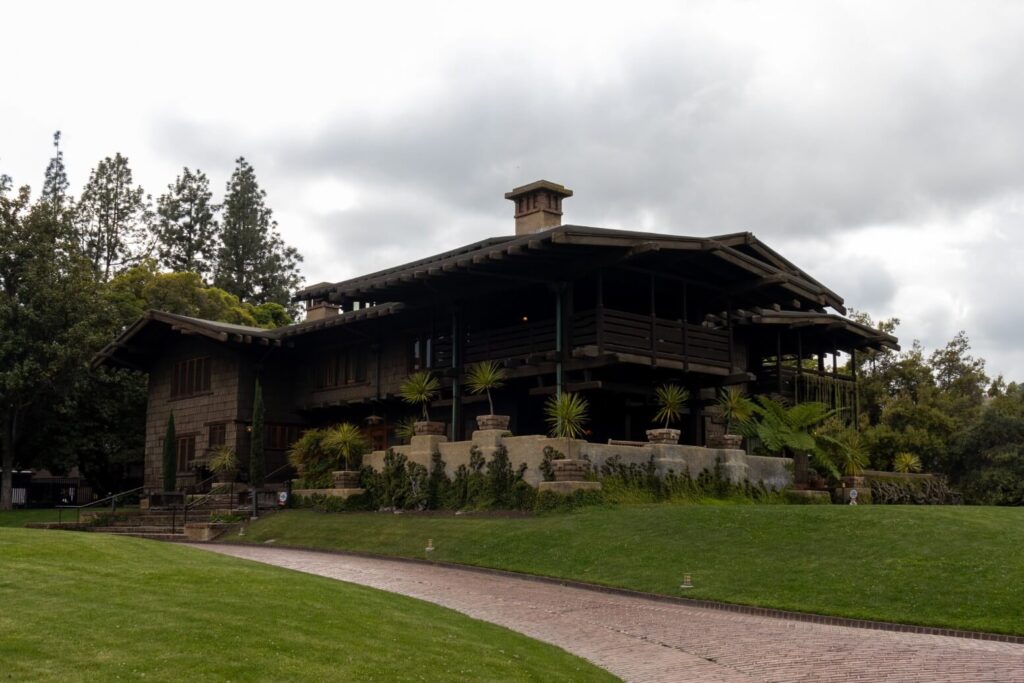
“Arts and Crafts architecture is very horizontal,” Rasic said.
The Gambles’, who commissioned the design, and the Greenes’ shared fascination with nature is a theme of the house, according to Rasic.
“It looks very organic when you’re standing outside in some places, with beautiful creeping figs that go around the building,” Rasic said. “It looks almost at times that the house was growing out of the ground like it’s one with the place.”
Director of Collections & Interpretation at the Gamble House Conservancy Jennifer Trotoux said one of the Gamble House’s most impressive features is its organization.
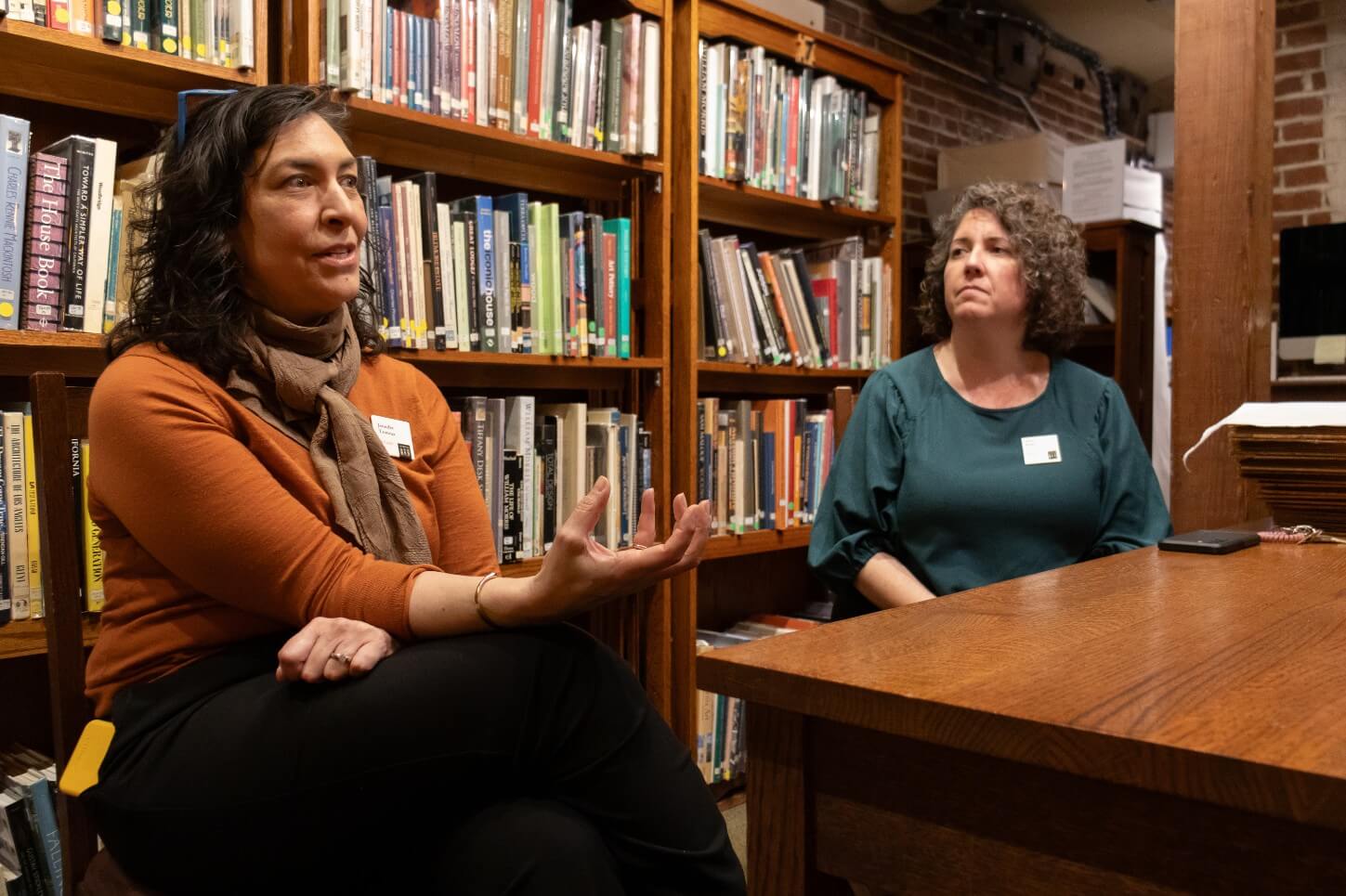
“There’s that really natural flow through the main hall to all the other rooms,” Trotoux said. “And then the way that it relates, not only from room to room, but also to the surroundings. The way that everything is stacked so that you get those views to the north of the mountain, and those views to the west of the Arroyo Seco.”
The pièce de résistance of the Gamble House, Trotoux said, is its staircase, which is typical to any house designed by the Greenes.
“The staircase railing steps follow the line of the stairs,” Trotoux said. “[It’s] made out of a single piece of teak that’s carved into that step shape.”
According to Trotoux, outside of the Arts and Crafts movement, the Greenes’ architectural style was influenced by their West Virginia farm upbringing, as well as by various movements worldwide, including Asian styles.
“They were really absorbing things from a lot of different sources,” Trotoux said. “They were at MIT, so to be put in that high-level educational environment, all of a sudden, after coming from the Midwestern city and farm, and the opportunities that they had there and the things they were exposed to [were influential]. They [were] in Boston [and] they [were] exposed to lots of Asian art.”
As part of this heterogeneous influence, Trotoux said the Gamble House was partly designed with a German concept of artistic cohesion.
“The word is ‘gesamtkunstwerk,’” Trotoux said. “It’s not something that looks collected from a lot of different places, but it’s something where everything goes together.”
Trotoux said the Greenes’ own architectural style was integral in creating an architectural identity for the Southern California area, especially with their unique use of wooden materials.
“This style worked for Southern California and for the landscape of Pasadena,” Trotoux said. “[It’s] that idea of the West Coast being built on wood in the 20th-century and wood being such an important material coming down from the Northwest.”
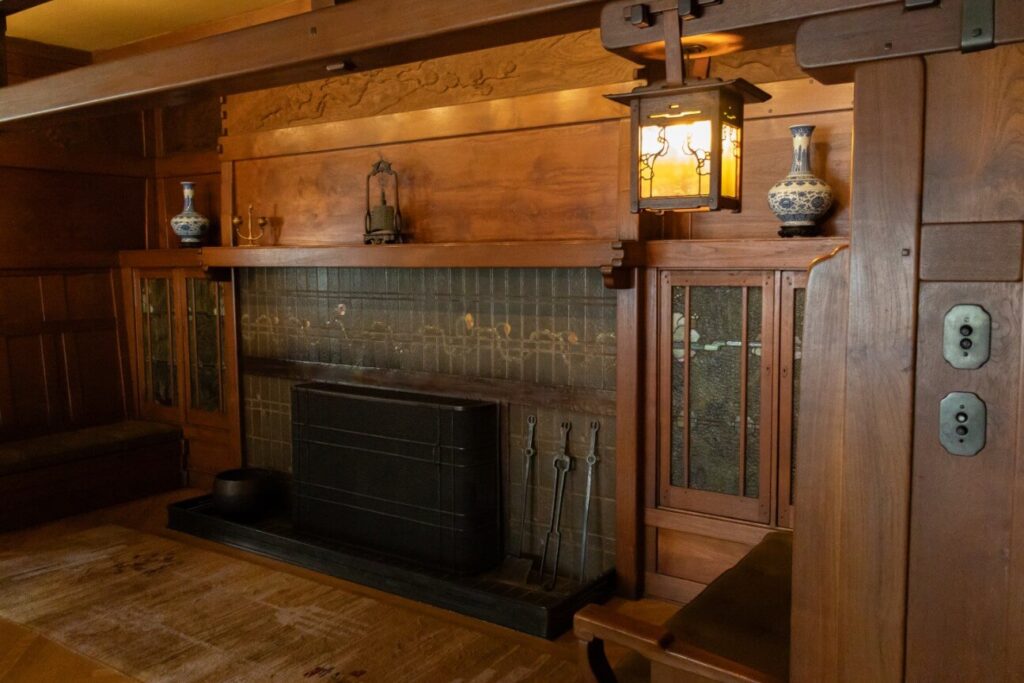
According to Trotoux, the Gamble House is a founding landmark in the history of LA architecture.
“There’s a canon of great houses of the Los Angeles area,” Trotoux said. “And the Gamble House is usually considered to be the earliest in that canon of 20th-century architecture.”
According to Siegelbaum, market trends today have largely commercialized the construction of buildings.
“Art and architecture today, at least in places like the U.S., are more determined than ever by market forces,” Siegelbaum said. “What this has meant over the past few decades is that [buildings] are treated as speculative financial assets.”
Trotoux said these trends have forced the hand of an architect out of the construction of many new buildings today, creating a commercial and impersonal relationship between a building and its inhabitants.
“A lot of architects grumble that they were written out of the picture because people realized that they could just build something [that] didn’t matter,” Trotoux said. “There’s no priority placed on what architecture brings in terms of added value. Building becomes a mercantile exercise.”
However, according to Rasic, the preservation of historical architecture can help maintain that personal connection that architectural landmarks create between a place and its people.
“It helps to tell a story of a community, of a place, of a time, of materials [and] of people who come together to make it happen,” Rasic said.
Trotoux said this personal connection, crafted by an architect’s touch and flair, furnishes a place’s distinct character.
“It’s what makes places meaningful,” Trotoux said. “It’s what gives places identity.”
The Gamble House is open for tours Tuesdays and Thursdays through Saturdays. Refer to the Gamble House website for times and availability.
Contact Noah Kim at nkim4@oxy.edu
![]()



































